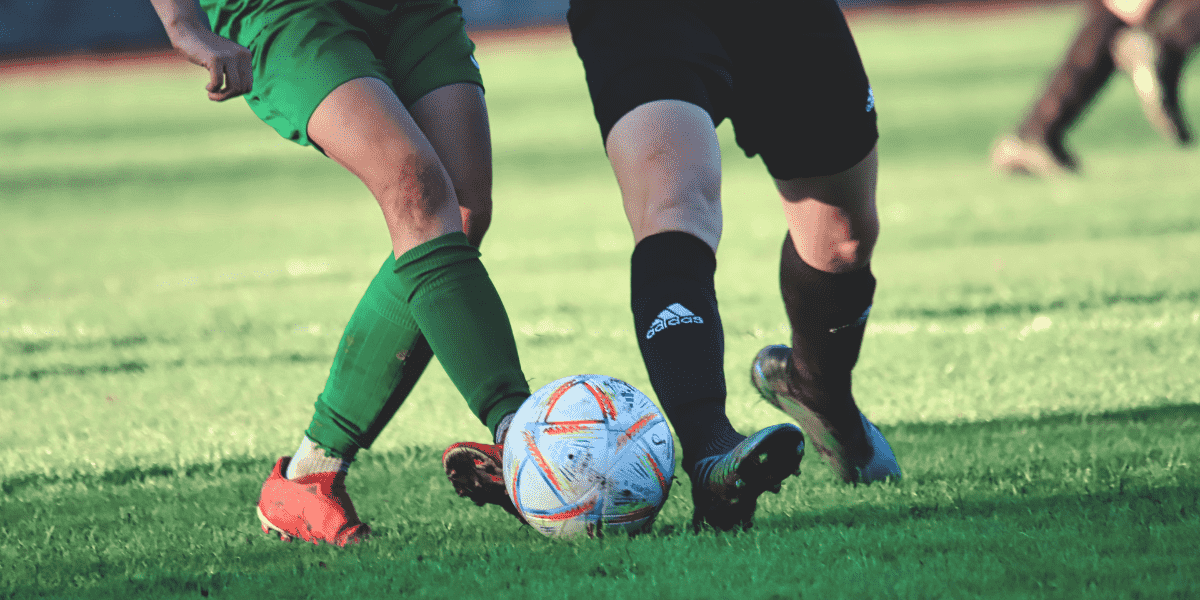Knee Meniscus Tear Treatment and Rehabilitation
A meniscus tear is one of the most common knee injuries, with approximately 61 out of 100,000 people will experience an acute meniscus tear. For those aged above 65, 60% of them will experience a degenerative meniscus tear.
Jump to
Knee Meniscus Tear in Singapore
Meniscus tears tend to get more common as you age. Meniscus tears may be more prevalent, considering Singapore's ageing population. However, not all meniscus tears start out severe and can sometimes go undiscovered for a long time if there are no pain symptoms accompanying it.

Treat your meniscus tear at Regis Wellness
High quality, effective, holistic treatments
What is a Meniscus Tear?
The meniscus refers to a C-shaped cartilage between our shinbones and thighbones. This cartilage serves to protect the joints by absorbing shock and impact from our everyday activities such as walking and running. A meniscus tear refers to an injury that causes this cartilage to tear. Activities that include twisting and rotating your knee, especially if there is weight put on the knee, are common causes of a meniscus tear. Degenerative meniscus tears can happen as well as a result of ageing. Depending on the severity of the tear, this can cause pain, affect your daily activities and even develop into chronic conditions such as arthritis. For meniscus tears that start off mild, you may not experience much pain even after the injury. However, left untreated, the meniscus tear may worsen and affect your ability to participate in sports, and physical activities and in severe cases, affect your ability to move freely.
Types of Meniscus Tears
Meniscus tears can differ in type and severity.
Radial Tear
A radial tear is the most common type of meniscus tear. A radial tear is not capable of healing on its own because it happens in the area of the knee where the blood supply does not reach. For severe radial tears, surgery may be required to treat them.
Horizontal Tear
A horizontal tear occurs along the curved fibers of the meniscus and can be sewn together by a surgeon, rather than removing the damaged parts of the meniscus. Since horizontal tears are located near the outside edge of the meniscus, they receive the most amount of blood flow and typically heal the fastest.
Flap Tear
A flap tear refers to a type of meniscus tear that occurs with an unusual tear pattern. The flap of the meniscus may be stuck in the joint, causing a catching feeling in the knee. This portion of the meniscus can be surgically removed by a surgeon.
Bucket-handle Tear
A bucket-handle tear is a type of horizontal tear that causes the knee to be stuck. This is a result of the torn portion of the meniscus blocking the knee motion. This type of meniscus tear generally requires immediate surgical treatment so that the knee can regain its ability to move normally.
Complex Tear
A complex tear refers to a meniscus tear with a combination of tear patterns, typically inclusive of radial and horizontal tears. Complex tears are usually difficult to treat due to the complexity of the tear patterns.
Incomplete Tear
Incomplete or intrasubstance tears can occur as signs of early degenerative changes in the meniscus. This typically happens in individuals aged between their 20s to 30s. These tears usually do not require surgical treatment since they are considered to be stable injuries.
Symptoms of a Meniscus Tear
Depending on the severity of the meniscus tear experienced, symptoms may vary. Typically, the symptoms of a meniscus tear include:
- Knee pains
- Swelling of the knee joint
- Reduced range of movement
- Inability to straighten the knee
- The popping sound of the knee
- Tenderness near the knee joint
If you experience symptoms of a meniscus tear, it is advised that you do not try to play through the pain. Doing so could worsen the severity of the tear, causing greater pain once the inflammation sets in.
Meniscus Tear Risk Factors
You may be at a higher risk of experiencing a meniscus tear if you:
- Participate in sports that involve twisting and rotating of the knee, such as soccer and basketball
- Have prior anterior cruciate ligament (ACL) injury
- Do not use proper landing, jumping and cutting techniques while participating in sports
- Are obese or overweight
- Are aged 65 and above
Complications of Meniscus Tears
Meniscus tears that are not severe can usually be treated rather easily. However, in severe cases, or in cases where the meniscus tear is left untreated and does not heal properly, the meniscus tear can lead to various health complications. These complications may include:
- Loss of stability in the knee. This loss of stability can increase your risk of other knee-related injuries such as an ACL tear.
- Loss of range of movement. The torn meniscus may result in you being unable to move your knee without experiencing severe pain.
- Increased risk of developing osteoarthritis in the affected knee.
- Loss of knee function. Part of the injured meniscus may fall apart and slip into the joint, causing a loss of knee function which will require surgery to repair.
- Chronic knee pain. Untreated meniscus tears may lead to chronic knee pain.
Diagnosing Meniscus Tears
You may be unsure if the knee pain you experience is a meniscus tear. A doctor or a physiotherapist can help you diagnose your knee pain through a physical examination. Your physiotherapist will ask you to walk, squat as well as move your affected knee and leg into different positions to spot the root cause of your pain. If this is inconclusive, your physiotherapist may also make use of imaging tests such as an X-ray or a Magnetic Resonance Imaging (MRI) test to eliminate other possible causes of knee pain and accurate detect a torn meniscus.
Treatment Methods for Meniscus Tears
Meniscus tears can typically be treated using conservative methods but can vary depending on the type, size and location of your tear.
Rest
The first step to treating a meniscus tear is always rest. Continued use of the injured knee can aggravate your knee pain and worsen the injury, especially if you participate in activities that require you to twist, rotate or pivot your knee. Crutches may be required if you are experiencing severe pain. The additional support from the crutches can aid your recovery process by relieving pressure on the injured knee.
Ice
You can use a cold pack to press against the affected knee to reduce pain and swelling. While keeping your knee elevated, apply the cold pack or a towel filled with ice cubes to the knee for approximately 15 minutes at a time. This can be done every 4 to 6 hours.
Medication
Pain relieving medicine can help to alleviate pain symptoms and reduce inflammation.
Surgery
Depending on the type of meniscus tear you experience and your body’s response to the conventional treatment methods for meniscus tears, surgery may be required. Meniscus surgery is carried out to remove or repair a torn meniscus, where small incisions are made. Your knee will take a period of time to recover from the surgery, lasting for about a few weeks. Physiotherapy and rehabilitation after meniscus tear surgery will be needed to ensure full recovery.
Physiotherapy and Rehabilitation
Physiotherapy can help treat meniscus tears by improving the strength and flexibility of the muscles around your knees. Physiotherapy not only focuses on alleviating your symptoms of pain but also assists you during the recovery process with the objective of regaining your range of movement and muscle function. Since overexerting the injured knee can aggravate the meniscus tear, carrying out strengthening and flexibility exercises under the supervision of a trained physiotherapist will allow you to concentrate on recovery without the fear of further injuries.
Typically, the exercises recommended by your physiotherapist will focus on recovering your range of motion, stretches to help reduce muscle tension and strengthening exercises for the muscles to increase support for your injured knee. Once you have mastered and are able to carry out the exercises in a safe manner, you should be able to conduct these exercises on your own at home regularly. Your physiotherapist will assess your progress and increase the difficulty of these exercises if your condition allows it to be done.
Strengthening and conditioning muscles will not only help to relieve pain but will also increase your overall pain tolerance and reduce your risk of future injuries.
Disclaimer:
The information on this website, including but not limited to, text, graphics, images, videos and all other materials contained on this website is for informational purposes only. None of the material is meant to replace a certified and registered Doctor's professional medical advice, diagnosis, and treatment.
No warranties or representations are given in respect of the medical information. Regis Wellness, Regis Wellness’s staff, and the website's operator will not be held liable if a user suffers any injury or loss after relying upon the medical information on this website.
Any devices used for technology-enhanced therapies are intended for use only for general well-being purposes or to encourage or maintain a healthy lifestyle and is not intended to be used for any medical purpose (such as the detection. diagnosis, monitoring, management or treatment of any medical condition or disease). Any health-related information provided by this device or software should not be treated as medical advice. Please consult a certified and registered Doctor for any medical advice required. As with all medical conditions, there are exceptions and nuances to individuals’ condition and treatment modalities. We aim to provide only a general understanding for each section.
6 Types of Meniscus Tears, Orthopaedic Associates of Central Maryland, 19 June 2020, https://www.mdbonedocs.com/6-types-of-meniscus-tears/.
Cluett, Jonathan. “The 6 Types of Meniscus Tears.” 6 Types of Meniscus Tears and How Their Treatment Differs, Verywell Health, 14 Mar. 2022, https://www.verywellhealth.com/types-of-meniscus-tears-3862073.
Hitti, Miranda. “Torn Meniscus Common, Not Always Painful.” Study: Meniscal Tears Common with Age, May Not Cause Knee Pain, WebMD, 10 Sept. 2008, https://www.webmd.com/a-to-z-guides/news/20080910/torn-meniscus-common-not-always-painful
“Knee Meniscus Tear.” HealthHub, Khoo Teck Phua Hospital, 6 Dec. 2019, https://www.healthhub.sg/a-z/diseases-and-conditions/768/knee-meniscus-tear-ktph.
“MENISCUS INJURIES.” Meniscus Injuries, The Steadman Clinic, https://www.thesteadmanclinic.com/patient-education/knee/meniscus-injuries#:~:text=Statistics%20show%20that%20about%2061,degenerative%20tear%20of%20the%20meniscus
“Meniscus Surgery.” Meniscus Surgery: Who Needs It, What to Expect before & After, Cleveland Clinic, 17 Apr. 2021, https://my.clevelandclinic.org/health/treatments/21508-meniscus-surgery#:~:text=Meniscus%20surgery%20is%20a%20common,rehabilitation%20take%20a%20few%20weeks.
Meniscus Tears: Why You Should Not Let Them Go Untreated, Penn Medicine, 10 Nov. 2020, https://www.pennmedicine.org/updates/blogs/musculoskeletal-and-rheumatology/2018/september/meniscus-tears-why-you-should-not-let-them-go-untreated
Robinson, Jennifer. “Do I Need Physical Therapy for a Meniscus Tear?” Physical Therapy (PT) and Exercises for a Meniscus Tear Rehab, WebMD, 13 May 2021, https://www.webmd.com/pain-management/knee-pain/physical-therapy-meniscus-tear.
“Torn Meniscus.” Torn Meniscus - Diagnosis and Treatment, Mayo Foundation for Medical Education and Research, 6 Jan. 2022, https://www.mayoclinic.org/diseases-conditions/torn-meniscus/diagnosis-treatment/drc-20354823
“Torn Meniscus.” Torn Meniscus - Symptoms and Causes, Mayo Foundation for Medical Education and Research, 6 Jan. 2022, https://www.mayoclinic.org/diseases-conditions/torn-meniscus/symptoms-causes/syc-20354818#:~:text=The%20meniscus%20is%20a%20C,the%20most%20common%20knee%20injuries
“Torn Meniscus.” Torn Meniscus: Causes, Symptoms, Treatments, Prevention & Outlook, Cleveland Clinic, 17 Apr. 2021, https://my.clevelandclinic.org/health/diseases/17219-torn-meniscus.
Wheeler, Tyler. “Meniscus Tear Knee Injury.” Meniscus Tear in Knee: Symptoms, Causes, and Treatments, WebMD, 26 Jan. 2022, https://www.webmd.com/pain-management/knee-pain/meniscus-tear-injury


